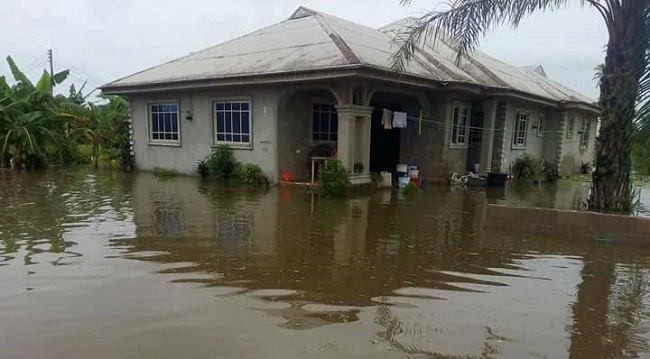Many impacts of human-induced climate change, from drought and heat waves to Antarctic ice melting, are coming earlier than expected, scientists have said.

Extreme events, such as recent fires in North America and floods across Asia, can with increased certainty be linked to global warming. Halving global emissions over the next decade is technically achievable and would save the world billions of dollars, the experts said in a new statement to coincide with the UN annual climate talks in Katowice, Poland.
Their warning comes as global emissions are projected to rise for a second consecutive year to a new historical high after three stable years.
Professor Johan Rockström, Co-Chair of Future Earth and Chair of the Earth League, the organisations that produced the statement, says: “Emissions must peak by 2020. The world cannot allow climate catastrophe to unfold when all the solutions to solve this challenge are here in front of us.”
“Our analysis of the most recent research shows that a global transition to clean energy is affordable, achievable, and already underway,” says Future Earth Executive Director Amy Luers. “But to avoid catastrophe, we must ratchet up the pace and move beyond energy. The research shows clearly that we must cut emissions by half across all economic sectors in the next decade, to have a chance of avoiding the worst impacts of the climate crisis.”
The statement, titled “10 New Insights in Climate Science,” will be presented at the United Nations Framework Convention on Climate Change 24th Conference of the Parties, on Monday, December 10, 2018 and distributed to negotiators in Katowice. It is published by Future Earth and the Earth League, two major international organisations representing networks of global sustainability scientists, and summarises recent Earth-system science, policy, public health and economic research.
The 10 new Insights in Climate Science are summarised to include:
Extreme weather events are now clearly attributable to climate change
The frequency and intensity of extreme events, including flooding, heat waves, and drought conditions have been increasing. Until recently, it was difficult to clearly attribute these events to climate change. Now, more accurate observations and progress in modelling has made the link clear.
Growing climate impacts show risks of critical tipping points
Changes have been observed in major Earth systems – like a weakening of the Atlantic overturning circulation, mass mortality of the world’s coral reefs, and the tripling of ice loss from the West Antarctic ice sheet. These and other systems could reach points where they rapidly collapse, or a major, largely unstoppable transformation is initiated. The risks are growing.
Every half degree matters: Large difference in impacts between 1.5°C and 2°C degrees of warming
This year’s Intergovernmental Panel on Climate Change (IPCC) Special Report on 1.5oC has shown that the magnitude and risk of a range of climate change impacts increase significantly between 1.5°C and 2°C.
New understanding of the acceleration of sea level rise and its future
The rate of ice loss from Antarctica is increasing. It is now almost twice as high as projected by the latest IPCC assessment (2014). Limiting warming to 1.5°C instead of 2°C can avoid the inundation of lands currently home to about 5 million people.
Managing plants and soil: a prerequisite for meeting the Paris Agreement
Between 2007 and 2016, land use change was responsible for annual global emissions of, on average, 4.7 billion tons of CO2, which is around 12 percent of CO2 emissions. Natural climate solutions could potentially provide over one-third of the cost-effective climate mitigation needed between now and 2030 to stabilise warming to below 2°C.
Options to remove CO2 from the atmosphere are limited
Scenarios that have recently been assessed by the IPCC show that the world will need to draw down between 100 and 1000 billion tons of CO2 out of the air, so-called Carbon Dioxide Removal (CDR), during this century to achieve the 1.5oC target. But research shows that CDR at the upper end of this scale conflicts with other sustainable development goals.
Major socio-technical transformations needed to meet the 1.5°C target
Globally, approximately halving greenhouse gas emissions by 2030 is consistent with meeting the Paris Agreement goal to stay “well below 2°C.” This is technically feasible, but this scale of emissions reductions requires transformations of full socio-technical systems, across all sectors and scales. There is already considerable momentum in the energy sector that it could see major shifts towards very low emissions, with the right support. However, there is worryingly little progress in reducing emissions from buildings, transport, food systems and industry.
Stronger policy measures would reduce climate risks
Global fossil fuel subsidies remain massive. Phasing out these would reduce global carbon emissions and strengthen public budgets, but reforms should consider acceptance, effects on poverty, and possible adverse effects such as shifts from gas to coal. A portfolio of policies including standards, regulations, incentives, and carbon pricing would effectively support and accelerate a low-carbon transition.
Transformation of food systems needed for global health and reduced greenhouse gas emissions
Decarbonising and building resilience in the world food system is a prerequisite to succeed with the Paris Agreement. Dietary shifts away from unhealthy “Western diets” towards reduced meat and dairy consumption are a significant way to reduce greenhouse gas emissions and improve health.
Benefits for global health by addressing climate change
Climate change is increasing the numbers of injuries, illnesses, and deaths from, for example, extreme weather and climate events, infectious diseases, and undernutrition. Efforts to combat climate change would have significant co-benefits for health, chiefly, saving millions of lives through lower air pollution.
